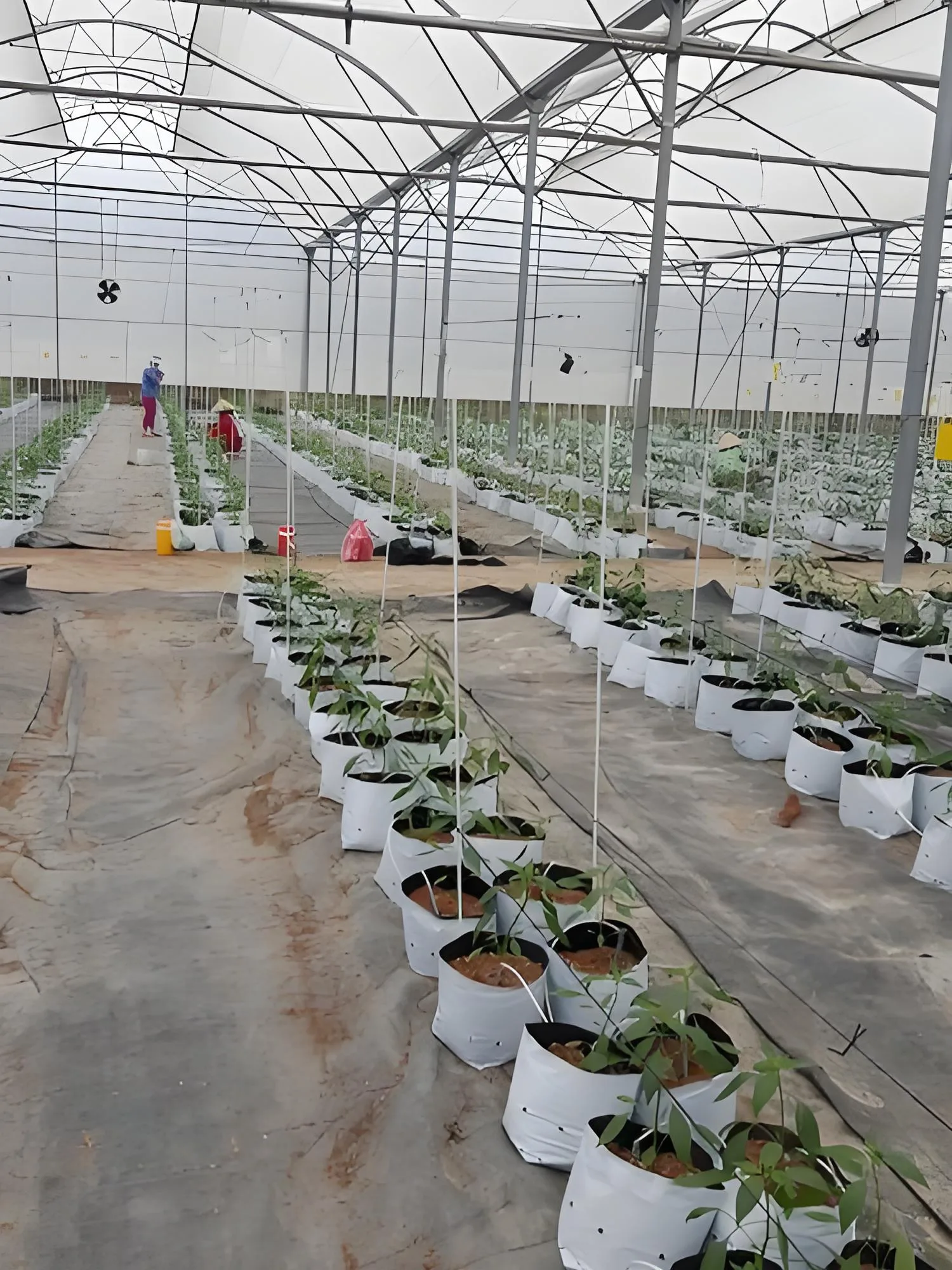Introduction
Metal garden stakes look inexpensive on a purchase order—until they bend in rocky soil, rust in seaside air, or short‑circuit a live line. That hidden cost has industrial buyers turning to the fiberglass garden pole as a smarter, longer‑lived alternative. Unicomposite, an ISO‑certified pultrusion manufacturer in China, supplies bulk FRP (fiberglass‑reinforced plastic) profiles to utilities, contractors, and OEMs worldwide, giving us first‑hand insight into why composites now outpace metal in demanding field conditions.

fiberglass garden pole
What Exactly Is a Fiberglass Garden Pole?
1.1 — Pultruded FRP Explained
A pultruded pole is made by pulling continuous glass fibers through a resin bath and a heated die. The result is a straight, uniformly reinforced profile that keeps the fibers perfectly aligned along the length of the pole—ideal for axial loads such as tree support or temporary formwork.
1.2 — Core Material Properties
High strength‑to‑weight – up to 150 kN tensile capacity at one‑third the weight of steel.
Dielectric safety – non‑conductive to 100 kV per ft, crucial for hot‑stick utility work.
Corrosion & UV resistance – matrix resins blended with UV inhibitors and veil surfacing layers routinely pass 5,000‑hour QUV tests.
Quote: “ASTM D790 flexural tests show pultruded fiberglass holding 55,000 psi before failure—surprising for a part you can carry under one arm.” — Dr. L. Jacobs, composites researcher, Midwest Materials Lab.
Fiberglass vs. Metal Stakes: A Side‑by‑Side Comparison
| Performance Factor | Fiberglass Pole | Galvanized Steel Stake |
|---|---|---|
| Weight (per 8 ft, Ø 1 in) | 1.8 lb | 4.9 lb |
| Five‑Year Replacement Rate (coastal) | 8 % | 31 % |
| Dielectric Rating | 100 kV/ft | Conductive |
| Crew Handling Injuries* | 0.4 / 10k poles | 1.6 / 10k poles |
*Source: anonymized contractor safety logs, 2022‑2024.
2.1 — Handling & Job‑Site Efficiency
A two‑person crew can unload 5,000 fiberglass poles in one‑third the time required for the same tonnage of metal, freeing crane capacity for higher‑value tasks.
2.2 — Durability & Maintenance Costs
Salt spray and fertilizer runoff accelerate corrosion in metal; FRP is chemically inert. Over five years, a humid‑zone grower spent 23 % less on replacements after switching.
2.3 — Safety & Regulatory Compliance
OSHA 1910.269 notes that live‑line tools must be non‑conductive. FRP poles meet this requirement out of the box—no heat‑shrink sleeves or rubberized coatings to maintain.
Application Scenarios for Bulk Buyers
3.1 — Power & Telecom Utilities
Dielectric poles act as aerial marker supports, phase identification sticks, or lightweight lattice replacements. One utility cut truck‑roll weight by 900 lb per day, lowering fuel use 12 %.
3.2 — Agriculture & Horticulture
Vineyards: trellising runs stay straight through freeze‑thaw cycles.
Greenhouses: moisture‑proof framing that never rusts.
Orchards: impact‑resistant tree props that don’t spark when struck by pruning saws.
3.3 — Heavy Civil & Temporary Works
Anonymized bridge contractor “Project S”—operating beside brackish marshes—swapped metal form spacers for fiberglass garden poles cut to length at Unicomposite. Call‑backs for bent spacers dropped 60 %, and weekly freshwater rinses were eliminated.
Cost of Ownership Deep Dive
4.1 — Purchase Price vs. Lifecycle ROI
A bulk order of 5,000 poles (1 in Ø × 10 ft) may cost 18 % more upfront than metal. Yet the payback period averages 22 months thanks to:
Fewer replacements (8 % vs 31 %).
Lower freight class (Class 60 vs 70).
Negligible scrap disposal fees.
4.2 — Hidden Savings: Logistics & Storage
Fiberglass nests densely; one 40‑ft container fits 35 % more poles than equivalent steel bundles. Indoors, they store without rust inhibitors—freeing warehouse racks from oily drip pans.
Installation & Engineering Best Practices
5.1 — Choosing the Right Diameter and Wall Thickness
Use load tables:
1 in Ø × 1/8 in wall supports 140 lb vertical load with 3 ft embed depth.
1.5 in Ø × 3/16 in wall sustains 380 lb in 70 mph wind zones.
5.2 — Mounting Methods & Tools
Drive caps protect the top during hammering.
Pre‑drilled anchor plates speed bolt‑down installations.
Use carbide grit blades or water‑cooled diamond wheels for field trimming.
5.3 — Custom Fabrication Support from Unicomposite
Need color‑coded poles or CNC‑milled slots for sensor cabling? Unicomposite’s in‑house pulwound capability and post‑processing stations cut assemblies to ±0.5 mm tolerance, delivered palletized and kitted for line‑side use.
Sustainability & Quality Assurance
6.1 — Environmental Footprint
A cradle‑to‑gate study by the University of Girona shows pultruded FRP consuming 37 % less embodied energy than extruded aluminum of equal stiffness. Fiberglass scrap can be down‑cycled into cement clinker, diverting landfill waste.
6.2 — ISO‑Certified Production & Traceability
Unicomposite’s ISO 9001:2015 workflow logs every batch of rovings and resin. Each pole ships with a unique QR code linking to cure profiles, tensile stats, and third‑party fire‑smoke reports—critical for public‑sector bids.
Conclusion
For contractors and OEM buyers who measure success in uptime, safety, and total cost—not sticker price—a fiberglass garden pole delivers quantifiable value. Lightweight handling cuts labor, corrosion immunity slashes replacements, and dielectric safety keeps crews protected. Ready to spec the right composite pole for your next project? Request a technical datasheet or bulk quotation from Unicomposite today.
Frequently Asked Questions
Q1: How long will fiberglass poles last outdoors?
Laboratory weathering and field data show a 20‑year service life in temperate climates, assuming normal UV exposure and no structural overload.
Q2: Can poles be drilled or cut on‑site?
Yes. Use carbide or diamond tools and light feed rates; seal exposed ends with a quick brush of epoxy for maximum moisture protection.
Q3: Are custom colors or branding available?
Unicomposite can pigment resin during pultrusion or apply UV‑stable topcoats. MOQ for custom color runs typically starts at 1,000 pcs.
Q4: What lead times should bulk buyers expect?
Standard sizes ship in 2‑3 weeks FOB China. Custom profiles with new tooling average 4‑6 weeks after die sign‑off.
Q5: Do fiberglass poles meet fire‑safety codes?
Class I flame‑retardant resins achieve ASTM E84 ≤ 25 flame spread. Certificate copies are supplied with each shipment.
 info@unicomposite.com
info@unicomposite.com


























